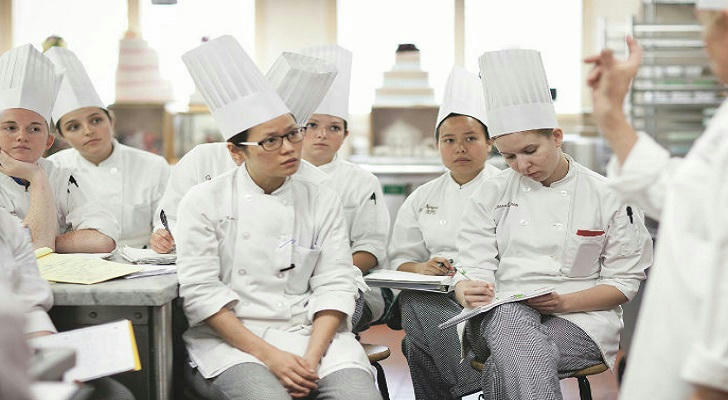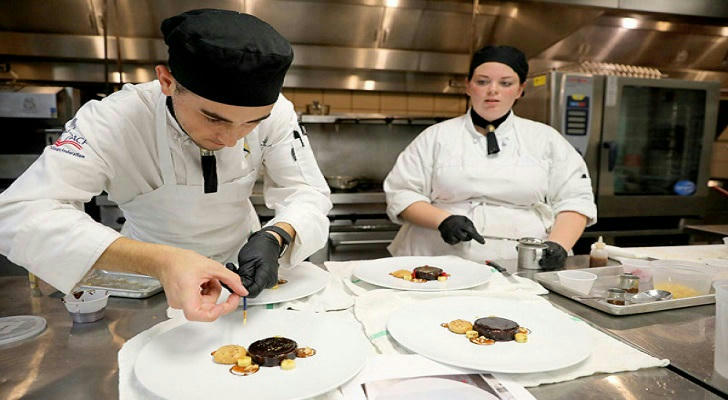Government-funded Culinary Arts Training Programs: Skill Retraining and Career Transition
🍳 Want to break into the restaurant industry but worried about the high entry point? Many locations across the United States offer government-funded and community-supported chef training programs covering culinary and food safety skills. Completion certificates will prepare you for careers in restaurants, hotels, school kitchens, and more, helping you embark on a stable career path.

1. What is a Culinary Arts Program?
Culinary Arts Training is a structured training program that covers:
- Food preparation
- Kitchen procedures
- Safety and health
- Nutrition and menu design
👉 Courses vary in format: from a few weeks to several months, or even certificate/diploma programs lasting a year or more.
👉 Hands-on training (internships, apprenticeships) is a key component, strengthening operational skills and adaptability.
In the United States, such training programs include both government-funded or cooperatively-sponsored programs and those offered by nonprofit organizations, community training centers, and workforce development agencies. Many programs also partner with catering companies or community kitchens to ensure training content remains relevant to market needs.
2. What do these programs offer?
In these programs, students not only learn culinary techniques but also acquire:
✦ Food safety and food handling skills
✦ Kitchen management and operational standards
✦ Teamwork, customer service, time management, and professional etiquette
🎯 Possible positions after graduation include:
- Line Cook
- Prep Cook
- Pastry Assistant
- Small Kitchen Manager or Assistant
3. What can a chef program offer you?
✔ Skill Enhancement: Master standard kitchen operations and food safety practices
✔ Expanded Employment Opportunities: Enter the catering, hotel, school, hospitality, and institutional dining sectors
✔ Nutrition and Food Awareness Enhancement: Understand dietary combinations and health principles
✔ Networking Build: Build connections with training centers, chef instructors, and employers
✔ Entrepreneurial Foundation: Understand kitchen operations, menu planning, and costing
IV. Benefits of Completing a Chef's Program
✨ Increased Employability
Enter the job market with practical experience and recognized certifications. Most programs offer official certifications upon completion, such as:
- Food Safety Certificate (ServSafe)
- Culinary Arts Certificate of Completion
- Vocational Training Certificate
✨ Career Development
The skills acquired can lead to promotions and higher-level positions. According to the U.S. Bureau of Labor Statistics (BLS), the median annual salary for chefs and head cooks in the food service industry is approximately $55,000, significantly higher than typical entry-level positions.
✨ Entrepreneurial Opportunities
Leverage your skills to start a restaurant business or food truck.
✨ Lifelong Learning
Serve as a foundation for further studies (such as pastry arts or nutrition).
V. Eligible Government-funded Culinary Training Institutions
✦ WIOA (Workforce Innovation and Opportunity Act) Programs
Eligible applicants can apply for culinary training programs through their local WIOA office, reducing their learning burden and providing opportunities to enter the restaurant industry.
✦ Taste Project
- Offers a Certified Fundamental Cook (CFC) apprenticeship program
- 16-week accelerated track with hands-on training in a real restaurant environment
✦ Feeding South Florida
- 12-week culinary training: knife skills, menu planning, and food preparation
- 5 days a week, classes 8:30 am - 3:00 pm
- Job referrals available through partnerships with restaurants
✦ Kitchens for Good
- State-certified culinary/baking apprenticeship model
- Transportation assistance, career counseling, and employer matching provided during training
- Completion of 360 hours of on-campus training + 9-11 months of on-the-job training → Qualify for state apprenticeship certification
✦ Smith Adult Community Education
- Evening and weekend classes for working adults
- Hours: 4 pm - 10 pm
- Courses: Basic Cooking, International Cuisine, etc.

VI. How to Apply for Government-Funded Culinary Programs
1️⃣ Find programs through local workforce centers/job training organizations.
→ These often offer funding or recommend suitable courses.
2️⃣ Contact community colleges/adult education centers.
→ Programs like Smith ACE offer public course schedules and registration.
3️⃣ Look for nonprofit and social enterprise programs.
→ Programs like Taste Project, Feeding South Florida, and Kitchens for Good. Some programs partner with the government.
4️⃣ Check out financial aid programs.
→ Some programs offer transportation subsidies, career counseling, tools, or uniforms to qualified applicants.
VII. Start a new chapter in your career
You've chosen a viable career path. Culinary training programs supported by government and community organizations enable people from all backgrounds to enter the food service industry. These programs offer hands-on instruction and classroom instruction, as well as career guidance and internship placements. Whether you are changing careers, improving your skills, or increasing your family income, it may be a new starting point for your culinary career.
